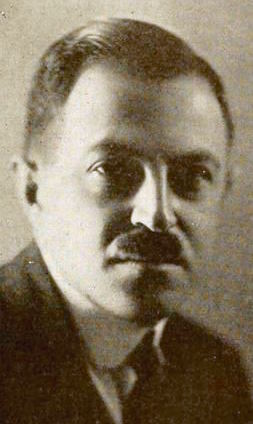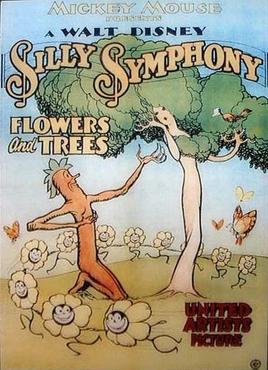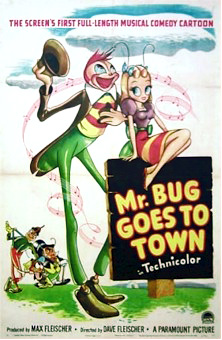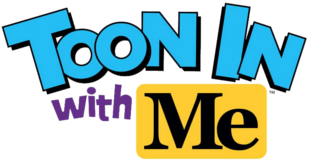
The golden age of American animation was a period in the history of U.S. animation that began with the popularization of sound synchronized cartoons in 1928 and gradually ended in the 1960s when theatrical animated shorts started to lose popularity to the newer medium of television. Animated media from after the golden age, especially on television, were produced on cheaper budgets and with more limited techniques between the 1960s and 1980s.

Fleischer Studios was an American animation studio founded in 1929 by brothers Max and Dave Fleischer, who ran the pioneering company from its inception until its acquisition by Paramount Pictures, the parent company and the distributor of its films. In its prime, Fleischer Studios was a premier producer of animated cartoons for theaters, with Walt Disney Productions being its chief competitor in the 1930s.

Max Fleischer was a Polish-American animator, inventor, film director and producer, and studio founder and owner. Born in Kraków, Poland, Fleischer immigrated to the United States where he became a pioneer in the development of the animated cartoon and served as the head of Fleischer Studios, which he co-founded with his younger brother Dave. He brought such comic characters as Koko the Clown, Betty Boop, Popeye, and Superman to the movie screen, and was responsible for several technological innovations, including the rotoscope, the "follow the bouncing ball" technique pioneered in the Ko-Ko Song Car-Tunes films, and the "stereoptical process". Film director Richard Fleischer was his son.

Betty Boop is an animated cartoon character designed by Grim Natwick at the request of Max Fleischer. She originally appeared in the Talkartoon and Betty Boop film series, which were produced by Fleischer Studios and released by Paramount Pictures. She was featured in 90 theatrical cartoons between 1930 and 1939. She has also been featured in comic strips and mass merchandising.

Flowers and Trees is a Silly Symphonies cartoon produced by Walt Disney, directed by Burt Gillett, and released to theatres by United Artists on July 30, 1932. It was the first commercially released film to be produced in the full-color three-strip Technicolor process after several years of two-color Technicolor films. The film was a commercial and critical success, winning the first Academy Award for Best Cartoon Short Subject.

Koko the Clown is an animated cartoon character created by Max Fleischer. He first appeared as the main protagonist in Out of the Inkwell (1918–1929), a major animated series of the silent era. Throughout the series, he goes on many adventures with his canine companion "Fitz the Dog", who would later evolve into Bimbo in the Betty Boop cartoons.
While the history of animation began much earlier, this article is concerned with the development of the medium after the emergence of celluloid film in 1888, as produced for theatrical screenings, television and (non-interactive) home video.
The silent age of American animation dates back to at least 1906 when Vitagraph released Humorous Phases of Funny Faces. Although early animations were rudimentary, they rapidly became more sophisticated with such classics as Gertie the Dinosaur in 1914, Felix the Cat, Oswald the Lucky Rabbit, and Koko the Clown.

The Fleischer Superman cartoons are a series of seventeen animated superhero short films released in Technicolor by Paramount Pictures and based upon the comic book character Superman, making them his first animated appearance.

Famous Studios was the first animation division of the film studio Paramount Pictures from 1942 to 1967. Famous was founded as a successor company to Fleischer Studios, after Paramount seized control of the aforementioned studio amid the departure of its founders, Max and Dave Fleischer, in 1942. The studio's productions included three series started by the Fleischers—Popeye the Sailor, Superman, and Screen Songs—as well as Little Audrey, Little Lulu, Casper the Friendly Ghost, Honey Halfwitch, Herman and Katnip, Baby Huey, and the anthology Noveltoons series.
ComiColor Cartoons are a series of twenty-five animated short subjects produced by Ub Iwerks from 1933 to 1936. The series was the last produced by Iwerks Studio; after losing distributor Metro-Goldwyn-Mayer in 1934, the Iwerks studio's senior company Celebrity Pictures had to distribute the films itself. The series was shot exclusively in Cinecolor.
Color Classics are a series of animated short films produced by Fleischer Studios for Paramount Pictures from 1934 to 1941 as a competitor to Walt Disney's Silly Symphonies. As the name implies, all of the shorts were made in color format, with the first entry of the series, Poor Cinderella (1934), being the first color cartoon produced by the Fleischer studio. There were 36 shorts produced in this series.

Dave Fleischer was an American film director and producer who co-owned Fleischer Studios with his older brother Max Fleischer. He was a native of New York City.

Mr. Bug Goes to Town is an American animated Technicolor feature film produced by Fleischer Studios, previewed by Paramount Pictures on December 5, 1941, and released in California and New York City in February 1942. The film was originally intended to be an adaptation of Maurice Maeterlinck's The Life of the Bee, but Paramount was unwilling to purchase the rights from Samuel Goldwyn, and instead developed an original modern story loosely inspired by the book.

Gulliver's Travels is a 1939 American animated musical fantasy film produced by Max Fleischer and directed by Dave Fleischer for Fleischer Studios. Released to cinemas in the United States on December 22, 1939, by Paramount Pictures, the story is a very loose adaptation of Jonathan Swift's 1726 novel of the same name, specifically only the first part of four, which tells the story of Lilliput and Blefuscu, and centers around an explorer who helps a small kingdom who declared war after an argument over a wedding song. The film was Fleischer Studios' first feature-length animated film, as well as the second animated feature film produced by an American studio after Walt Disney Productions' Snow White and the Seven Dwarfs, as Paramount had commissioned the feature in response to the success of that film. The sequences for the film were directed by Seymour Kneitel, Willard Bowsky, Tom Palmer, Grim Natwick, William Henning, Roland Crandall, Thomas Johnson, Robert Leffingwell, Frank Kelling, Winfield Hoskins, and Orestes Calpini.

Superman (1941), also known as The Mad Scientist, is the first installment in a series of seventeen animated Technicolor short films based upon the DC Comics character Superman. It was produced by Fleischer Studios and released to theaters by Paramount Pictures on September 26, 1941. Superman ranked number 33 in a list of the fifty greatest cartoons of all time sourced from a 1994 poll of 1000 animation professionals, and was nominated for the 1942 Academy Award for Best Animated Short Subject.

Popeye the Sailor is an American animated series of short films based on the Popeye comic strip character created by E. C. Segar. In 1933, Max and Dave Fleischer's Fleischer Studios, based in New York City, adapted Segar's characters into a series of theatrical cartoon shorts for Paramount Pictures. The plotlines in the animated cartoons tended to be simpler than those presented in the comic strips, and the characters slightly different. A villain, usually Bluto, makes a move on Popeye's "sweetie", Olive Oyl. The villain clobbers Popeye until he eats spinach, giving him superhuman strength. Thus empowered, Popeye makes short work of the villain.
Somewhere in Dreamland is a 1936 animated short in Max Fleischer's Color Classics series. The film was produced by Max Fleischer, directed by Dave Fleischer, co-directed by Dawn Fleischer, and was animated by Fleischer veterans Seymour Kneitel and Roland Crandall. The cartoon, set during the contemporary Great Depression, follows two impoverished children who dream that they are in Dreamland where there is an area full of candy and ice cream. The cartoon is Fleischer's first in three-strip Technicolor.

Tea for Two Hundred is an American animated short film directed by Jack Hannah. Part of the Donald Duck film series, the film was produced in Technicolor by Walt Disney Productions and released to theaters by RKO Radio Pictures on December 24, 1948. The cartoon stars a picnicking Donald Duck who faces an army of African ants trying to steal his food. Clarence Nash stars as Donald while the ants were voiced by Pinto Colvig. The film includes original music by Oliver Wallace.

Toon In with Me is an American live-action/animated anthology television series created by Neal Sabin for MeTV and MeTV Plus. A special preview episode aired on January 1, 2021, with the main series officially debuting on January 4, 2021.














